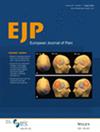A Parallel Human and Rat Investigation of the Interaction Between Descending and Spinal Modulatory Mechanisms
Abstract
Background
Healthy individuals demonstrate considerable heterogeneity upon dynamic quantitative sensory testing assessment of endogenous pain modulatory mechanisms. For those who stratify into a ‘pro-nociceptive profile’ cohort, consisting of inefficient conditioned pain modulation (CPM) and elevated temporal summation of pain (TSP), the optimal approach for balancing the net output of pain modulatory processes towards anti-nociception remains unresolved. In this translational healthy human and rat study, we examined whether descending modulation countered spinal amplification during concurrent application of a CPM and TSP paradigm alongside pupillometry since pontine activity was previously linked to functionality of endogenous pain modulatory mechanisms and pupil dilation.
Methods
Perceptual (quantitative sensory testing) and spinal neuronal (in vivo electrophysiology) assessment was performed in healthy humans and rats respectively upon application of parallel CPM/diffuse noxious inhibitory controls (cuff algometry) and TSP/wind-up (pinprick) paradigms alongside pupillometry.
Results
In humans, repetitive pinprick stimulation produced TSP while concurrent application of a noxious conditioning stimulus did not affect pain ratings to a single pinprick stimulus, repetitive stimulation or the wind-up ratio. In rats, repetitive pinprick produced neuronal wind-up while concurrent application of a noxious conditioning stimulus inhibited neuronal responses to a single stimulus and repetitive stimulation but not the wind-up ratio. For pupillometry experiments, dilatory responses did not increase during application of a TSP or CPM paradigm in humans, while reliable rat responses were not obtained.
Conclusions
Under the conditions of our study, spinal amplification mechanisms surpassed descending inhibitory controls while pupillometry did not offer a reliable indicator of endogenous pain modulatory mechanism function.
Significance: In this translational healthy human and rat study, activity in descending inhibitory controls did not counter spinal amplification processes underpinned by wind up. Despite pupil dilation being previously linked to modulatory mechanisms, dilatory responses did not offer a reliable indicator of functionality. For pro-nociceptive individuals exhibiting inefficient conditioned pain modulation and/or high temporal summation of pain, dampening faciliatory mechanisms rather than augmenting top-down inhibitory processes may be a more effective pain-relief strategy.


 求助内容:
求助内容: 应助结果提醒方式:
应助结果提醒方式:


